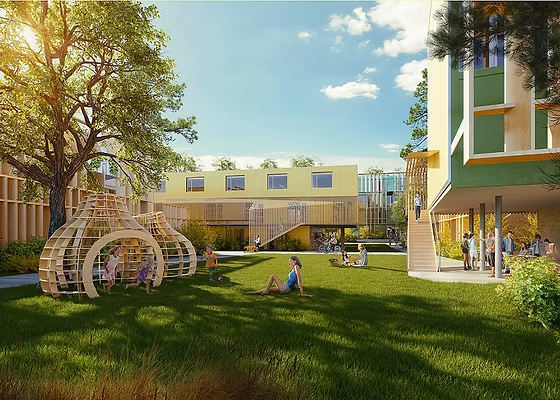Earlier this month, a new poll shook up the conversation about the future of the Santa Monica Airport site. Commissioned by UNITE HERE Local 11, the union representing hotel and hospitality workers, the survey revealed what many housing advocates have long argued but lacked hard data to prove: a strong majority of Santa Monica voters support a vision that includes not just a world-class public park, but deeply affordable housing as well. Two-thirds of voters want housing on the site, not just open space. Forty-six percent support an even split between the two, and another 19 percent were open to some combination. Support jumps even higher when framed around housing for essential workers like teachers, nurses, and firefighters, with 67 percent of respondents backing that idea.

The findings directly challenge the position taken by the Great Park Coalition, a group that has been lobbying the city to reserve the entire 227-acre site for a park. That proposal excludes any housing, despite the fact that Santa Monica has failed to meet its affordable housing obligations for years and has one of the most extreme worker-to-resident imbalances in the region. According to city reports, over 90 percent of the people who work in Santa Monica cannot afford to live there, and more than 70,000 people commute in each day, contributing to traffic congestion, pollution, and unsustainable land use patterns.
Santa Monica voters are not blind to the need for open space, but the poll confirms that they see the housing crisis as far more urgent. Only 19 percent of respondents said the lack of parks was a very serious problem. Forty-six percent said the lack of affordable housing was very serious. In total, 76 percent said the shortage of housing that working people can afford is a serious problem for the city. That is 2.4 times higher than the number who said the same about parkland.
The poll results also show that voters reject the idea that housing must be confined to commercial corridors and existing dense neighborhoods. The Great Park Coalition and some neighborhood groups have argued that the airport is not the “appropriate” place for housing, citing infrastructure and transit access. But this argument conveniently ignores the fact that the airport is public land, free of existing buildings or tenants, and capable of being designed as a complete neighborhood with transit connections, sustainability features, and green infrastructure from the ground up. It also reflects a pattern of exclusion that has long shaped Santa Monica’s land use politics, where low-income and working-class housing is permitted only in already impacted areas while wealthier neighborhoods avoid contributing their fair share.
Despite claims that Santa Monica is “park poor,” the data tell a more complicated story. The city’s open space figures exclude the 245 acres of adjacent state beach and more than 120 parks citywide. Santa Monica has fewer residents per square mile than most large cities and relatively high park access in the neighborhoods surrounding the airport. The city’s own Sustainable City Plan shows that areas like Sunset Park, adjacent to the airport, already have above-average access to open space.
The airport site is the largest publicly controlled parcel in the city. It offers a rare opportunity to correct the structural imbalance between jobs and housing on the Westside while also creating a major new public park. Proposals like Cloverfield Commons envision a future where deeply affordable homes are integrated with a large regenerative green space. Housing would be reserved for those who need it most, including low-income families, essential workers, and displaced Angelenos. The project would also bring in funding streams for park construction and maintenance through public financing mechanisms and nonprofit partnerships that are not available for a park-only plan.
Some opponents have argued that Measure LC, passed in 2014, prohibits housing on the site. In fact, the measure requires that any non-park use be subject to a vote of the people. Cloverfield Commons embraces that process. The plan would go to the ballot, allowing voters to decide whether a mix of park and housing is the right path forward. Many of the park features proposed by the Great Park Coalition, including cafés, restrooms, and cultural venues, would also require a vote under Measure LC. The question is not whether to vote, but whether to put forward a vision that reflects the city’s full set of values.

